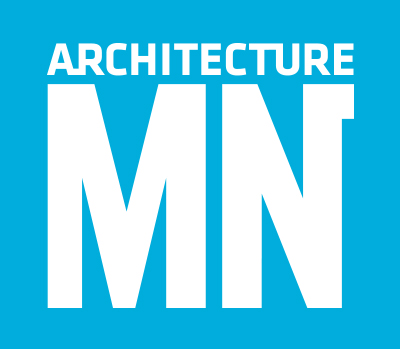Indoors and out, a recently expanded Minneapolis synagogue radiates timeless modern design
By Linda Mack
The architectural transformation of Temple Israel, a leading Twin Cities Reform Jewish synagogue, began with a simple assignment: Fix the 1955 split-level education wing where preschoolers encountered numerous stairways. It ended last fall with the opening of a 27,260-square-foot addition that propels the venerable institution into the 21st century.
Elevating the project to a higher level, HGA Architects and Engineers’ Joan Soranno, FAIA, and John Cook, FAIA, designed a U-shaped building that houses the temple’s preschool and religious education programs and adds compelling new indoor and outdoor spaces for the many religious and community events held at the synagogue.
In 2008, the temple undertook a holistic strategic-planning effort that included a look at its facilities. Senior Rabbi Marcia Zimmerman says they saw about $6 million in costs just to fix the education building. “We needed to take it down so all 108 of our Early Childhood Center students would be on the ground floor,” she says. “So if it takes that much just to get the place up to code, what would we dream?”
HGA did a master plan offering three options. The community opted for the most ambitious one: In addition to replacing the outdated education building, it replaced the temple’s columned back entrance with a large lobby that funnels people to both the sanctuary and the new education wing.
Measuring 88 by 50 feet, the lobby is much more than an arrival space. It’s where dinners and lunches are served after Friday and Saturday services. It’s where SPCO and Minnesota Sinfonia concertgoers gather at intermission. It’s where parents host bar and bat mitzvahs for their children. But it’s also a welcoming informal space where congregation members meet and parents dropping off preschoolers catch up over coffee—or simply hang out to work or read.
Before, people worshipped in the stunning 1928 sanctuary designed by Art Deco masters Liebenberg and Kaplan and then went to the basement. Now they stream in to the light-filled reception hall. “We wanted to bring them into the light,” says Soranno. “It’s transformed the way they gather, celebrate, and mourn.”
The hall overlooks an outdoor courtyard created by the new addition. “You don’t do work with Joan and John without getting a garden,” says Zimmerman. Soranno agrees: “A lot of our work is about light and landscape. A garden wasn’t part of the original plan. The ‘aha moment’ was deciding to orient everything around the garden.”
Planted simply with honey locusts, yews, pachysandra, and one serviceberry, the garden is an attractive backdrop for weddings, receptions, and other events.
The addition itself is equally understated. Limestone slabs and dark metal window surrounds tie it into the original building and create a quiet presence in the residential neighborhood. Subtly modulated vertical windows establish its modern credentials. The two-story wing that houses the preschool on the first floor and the youth religious education program on the second floor faces the higher apartment buildings to the south. The Early Childhood Center link facing single-family houses is only 12 feet tall.
The 20-foot-high reception hall is filled with light from two sides, but it’s a curved wood-slat ceiling that adds the wow factor. “Every kid and elderly person loves the ceiling,” says Zimmerman.
Project architect Robert Good, AIA, says it was a challenge “to learn how to drape wood.” Rift-cut white-oak slats form a catenary arch hung from cables that span the lobby. Above the wood screen is an acoustically absorptive material covered by a curved, stretched-fabric ceiling that’s illuminated by concealed fixtures. The composition softens the acoustics and creates a nighttime glow of layered lighting.
The L-shaped education wing is also understated, but it’s just as carefully conceived. The Early Childhood Center, a preschool open to all, occupies the first floor. The curriculum and classroom design reflect the principles of Reggio Emilia, an experiential learning philosophy. “The room is malleable so it can become part of the learning process,” explains Zimmerman. Each classroom has two windows on the wide hallway—one adult height and one child height—so everyone can see in and out.
A big corner room houses an indoor playground; the outdoor playground lines the building’s west side, shielded by a metal fence sporting a tree motif.
The temple’s youth religious education program, JEWL (Jewish Experiential Whole-person Learning), occupies the second floor. Again, the classrooms and furnishings are extremely flexible so they can work for presentations, games, and movement. An unadorned open space called the Pit facilitates interaction. Zimmerman says the 600 kids ages 5 to 18 used to have to split up between Saturdays and Sundays. Now everyone can come on Sundays.
How do architects help institutions grow and flourish? The Temple Israel addition could be Exhibit A. Simple new spaces foster human interaction. “It creates community, which was a goal of our strategic plan,” says Zimmerman.
2018 AIA MINNESOTA HONOR AWARDS JUROR COMMENT
“The wood ceiling in the gathering space is something I’ve never seen done before. It turns wood into something so opulent. If you didn’t know better, you might think it was gold. It allows you to believe in its lightness and its mass at the same time. The way it’s draped is just exquisite.”
—Allison Grace Williams, FAIA
TEMPLE ISRAEL LOBBY AND EDUCATION EXPANSION
Location: Minneapolis, Minnesota
Client: Temple Israel Minneapolis
Architect: HGA Architects and Engineers (HGA)
Principal-in-charge: Nancy Blankfard, AIA
Project lead designer: Joan Soranno, FAIA
Project manager: John Cook, FAIA
Project architect: Robert Good, AIA
Interior designer: HGA
Landscape architect: HGA
General contractor: M.A. Mortenson Company
Size: 27,260 square feet
Cost: $21.1 million
Completion: October 2016
Photographer: Paul Crosby


